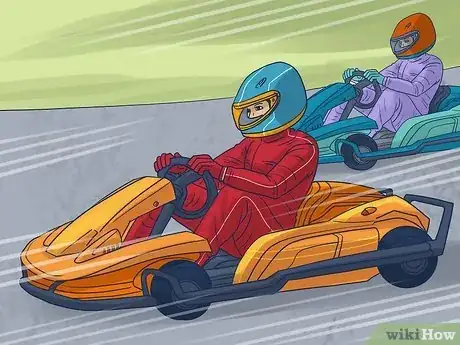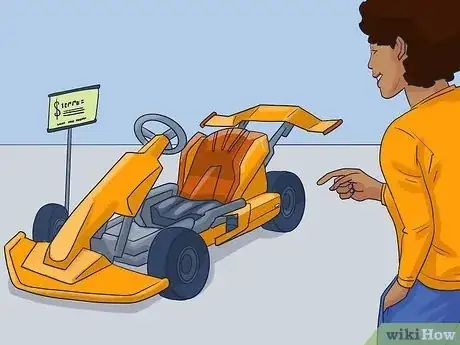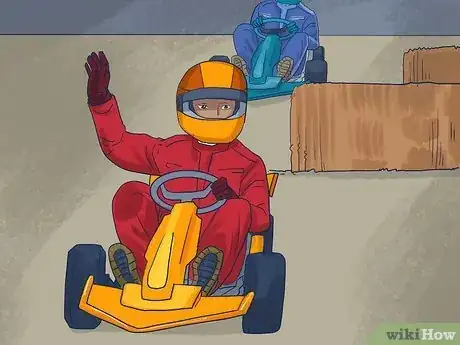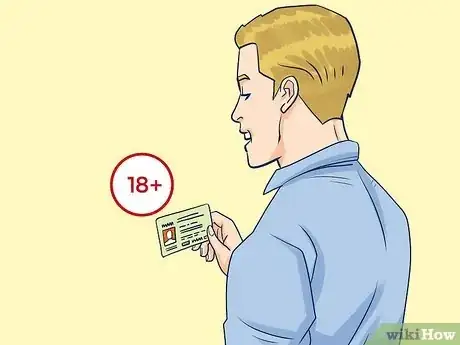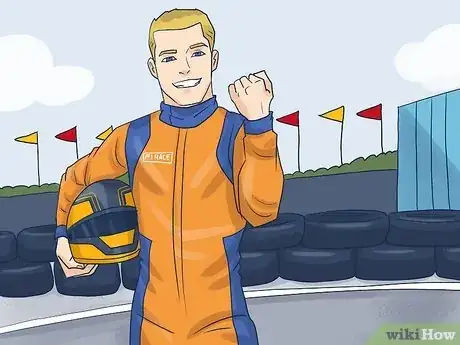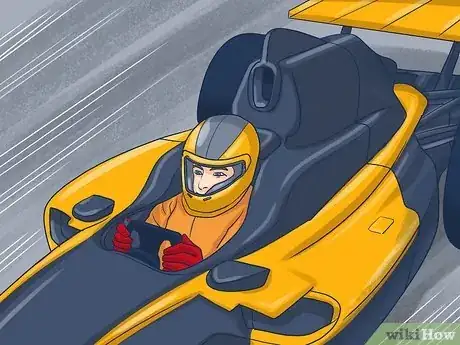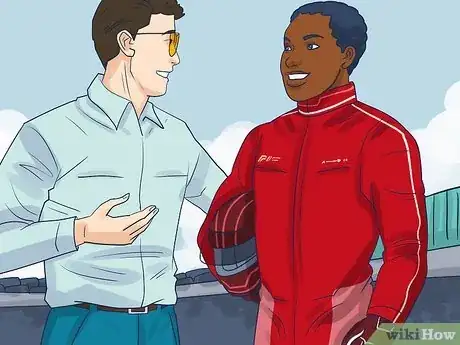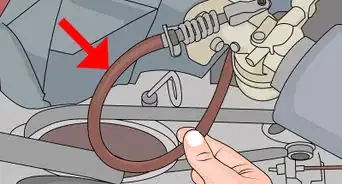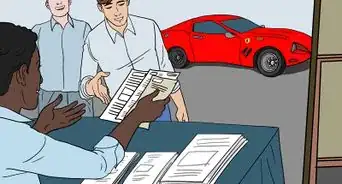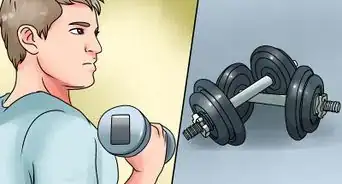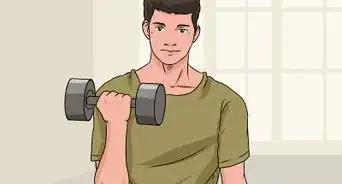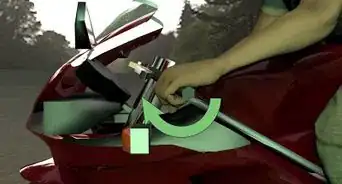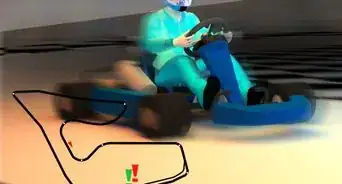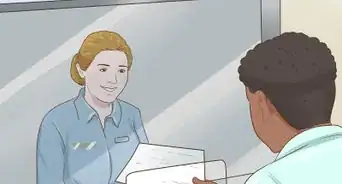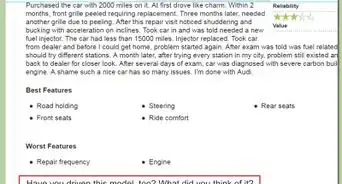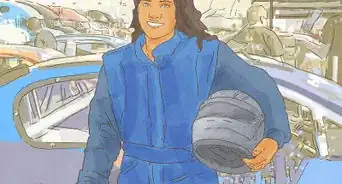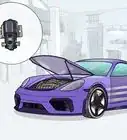wikiHow is a “wiki,” similar to Wikipedia, which means that many of our articles are co-written by multiple authors. To create this article, 23 people, some anonymous, worked to edit and improve it over time.
There are 10 references cited in this article, which can be found at the bottom of the page.
wikiHow marks an article as reader-approved once it receives enough positive feedback. This article received 37 testimonials and 100% of readers who voted found it helpful, earning it our reader-approved status.
This article has been viewed 500,802 times.
Learn more...
Formula 1 drivers are in a highly competitive sport that requires a great deal of talent and commitment to have any hope for success. While it may seem like a dream job, becoming a professional driver takes years of experience and a good deal of financial investment to climb the ranks to Formula 1. By knowing the steps required to becoming a Formula 1 racer, you can fully assess the risks and rewards to decide if the sport is right for you.
Steps
Learning to Drive
-
1Take a class at a racing school. This is the quickest way to find out if Formula 1 is right for you. It is ideal for older racers that are new to the sport. You will get to get behind the wheel of a Formula 1 race car and learn some of the basics of racing. These classes may have a substantial fee for a few hours of racing knowledge, but it is the most affordable way to gain knowledge about Formula 1 racing before you decide to make a larger financial commitment.[1]
- You must have a valid standard driver's license to take these classes, and if you are a minor you will also need parental consent.
- You must be capable of driving a car with a manual transmission to take racing classes.
-
2Enroll in a racing program. These programs will involve approximately 1-2 weeks of advanced classes to hone your racing skills. Since your goal is to race in Formula One, you likely want to select a school that is approved by the licensing organization.Advertisement
-
3Get your racing license. Upon completion of the required courses your school will send a letter of recommendation to a racing organization. This will enable you to register and compete in a racing school event.[2]
-
4Enter an amateur school race series. These entry level race events are a great opportunity for amateur drivers to showcase their skills and get the attention of potential sponsors. Some schools hold their own races and will even provide you a car for these race events. You can win scholarships and race points towards getting your next level license.
Climbing the Ranks
-
1Try kart racing. This method is the best way for younger racers to get involved in the sport. Most of the top Formula 1 drivers all started off racing carts. Buying a kart can be costly, so you may just want to visit a local kart track and try it out first.[3]
-
2Get a kart racing license. Some organizations will give any beginner that applies a license so they can start entry level races to learn the sport. To get into more serious races, you will need to continue to apply for higher licenses. You may need to pass a test given at an accredited school, or show proficiency at racing at your current level before being allowed to move up.[4]
-
3Buy your kart. If you are going to race you need some wheels. There are different vehicles for different levels of race, and you will probably need to buy or rent several karts before you move up to racing cars.
-
4Enter a race. Placing well in races is a big part in how quickly your racing career advances. The better you perform the sooner you will reach the next level. If you plan on getting to Formula 1, you will need to race as much as you can and always be looking to move up to the next level.
Getting Your Formula 1 License
-
1Complete two years in junior single seater racing events. Formula 1 requires drivers to have a good deal of experience driving similar vehicles. While there are many possible race series that can be your path to Formula 1, all racers must go through one or more of the junior levels to move up.[5]
-
2Turn 18 years old. Formula 1 racers must all be a minimum age to hold a license. Some younger racers are good enough to be considered for Formula 1, but will not be eligible until they reach the proper age. If you are still too young, look at gaining some more experience in any of the junior single seater race series to add to your race points.
-
3Accumulate 40 race points. These points are acquired based on performance and placement in junior race series events. 40 points must be acquired over a 3-year period to be eligible to get your Formula 1 license.[6]
-
4Accumulate 300 driving kilometers in a Formula 1 car. Drivers must complete 184 miles (300 kilometers) of racing in a recent Formula 1 vehicle. You can complete this driving requirement during official pre-season, in-season, and post-season tests, but the entire portion must be completed within 48 hours. Additionally, you must complete this test within 180 days before you apply for your license.[7]
Racing in Formula 1
-
1Accept an offer to drive for an F1 team. If you have performed well as an amateur an owner might ask for you to drive for their team. These teams are often owned by car companies and have their own sponsorships to cover costs. They usually sign their drivers on a season-to-season basis.[8]
-
2Get sponsorships. Most Formula 1 drivers have some sponsors that require additional work off the track. To attract sponsors you need to have success on the track and a positive public opinion. You may have to do appearances or photo shoots for your sponsor in addition to your on-track work. Racing is a very expensive sport, so drivers must look to add to supplement their racing income whenever possible.[9]
-
3Pay to drive in F1. Pay drivers are common in many levels of motorsports, including Formula 1. Instead of being paid by the race team, the driver uses money from sponsorships or their personal fortune to fund the racing operations. While this isn't practical for most new racers in Formula 1, it is an option if you have the ability to pay for it.[10]
Community Q&A
-
QuestionI'm 20 and I want to become a professional driver. How do I go about this?
 Community AnswerGo to Google and find racing clubs in your area, then follow the instructions on this site.
Community AnswerGo to Google and find racing clubs in your area, then follow the instructions on this site. -
QuestionIs it possible to skip kart racing?
 Shreyash TijareCommunity AnswerNot really. When driving a real F1 car for the first time, you need to have basic racing skills and some measure of experience, which is what the kart racing provides.
Shreyash TijareCommunity AnswerNot really. When driving a real F1 car for the first time, you need to have basic racing skills and some measure of experience, which is what the kart racing provides. -
QuestionCan I race for my country in Formula 1 if I move to another country or would I be racing for that country?
 Community AnswerYes. Drivers from around the world all compete in the same championship. It is generally your country of origin and where you are currently a citizen.
Community AnswerYes. Drivers from around the world all compete in the same championship. It is generally your country of origin and where you are currently a citizen.
Warnings
- Racing is very expensive. Be prepared to spend a lot of money to make it to Formula 1.⧼thumbs_response⧽
- Racing cars always comes with the risk of injury due to collisions. Think carefully about the potential danger before you commit to this career.⧼thumbs_response⧽
References
- ↑ https://www.roadandtrack.com/car-culture/a26584/five-racing-schools-that-will-make-you-a-better-driver/
- ↑ https://www.formula1.com/en/championship/inside-f1/rules-regs/Driver_changes_and_additional_drivers.html
- ↑ https://www.autoblog.com/2009/10/05/introduction-to-karting-part-1
- ↑ https://www.superkartsusa.com/membership.html
- ↑ https://www.formula1.com/content/fom-website/en/championship/inside-f1/rules-regs/Driver_changes_and_additional_drivers.html
- ↑ https://autoweek.com/article/formula-one/fia-refines-criteria-f1-super-license-0
- ↑ https://thenewswheel.com/path-to-formula-one-super-license/
- ↑ https://www.formula1.com/en/teams.html
- ↑ https://www.forbes.com/sites/csylt/2017/12/08/f1-sponsorship-more-than-just-a-logo/
About This Article
To become an F-1 driver, start by taking a class at a racing school to get a real sense of what driving a Formula 1 race car is like. If you enjoy the class, then enroll in a racing program, which typically involves 1-2 weeks of advanced classes in racing skills. Once you finish the required courses, your school will send a letter of recommendation to a racing organization, enabling you to register and compete in racing school events. To learn how to get your Formula 1 license, keep reading!




